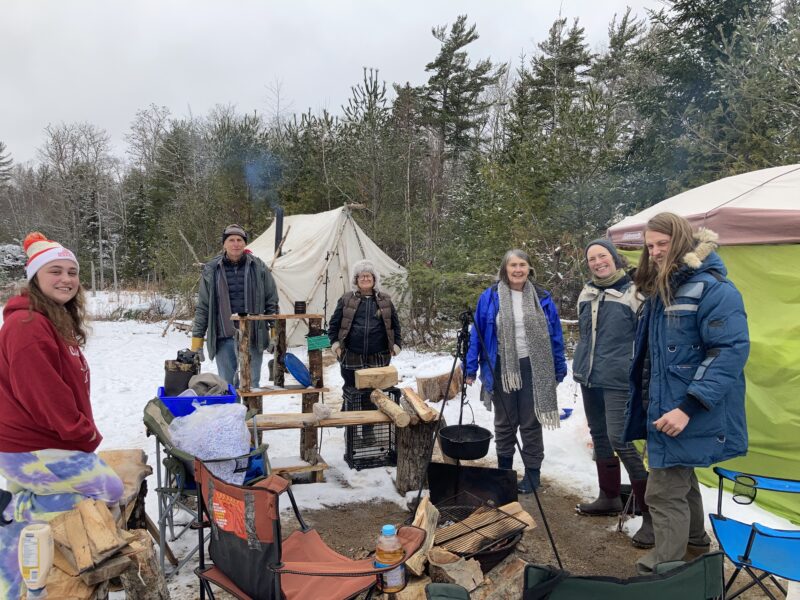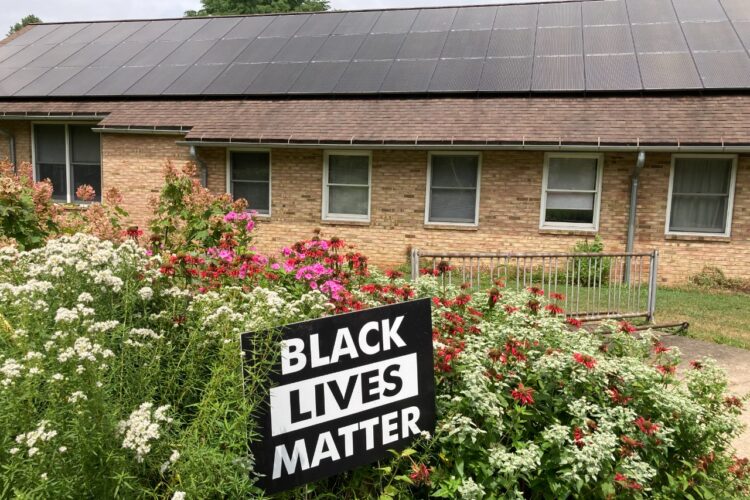Protecting the Last Hope Wildlife Corridor

by Carol Bradley.
One need only look down from a plane, or check out the satellite view of any Crown land forest in Nova Scotia to see just how much clearcutting is going on. Total massacre. Logging roads growing like a cancer across the province. – The Stop Spraying and Clear-Cutting Mi’kma’ki/Nova Scotia Campaign
Business as usual is over, if we want a livable planet. That’s why we are camped out here through blizzards and frigid temperatures. To save the Last Hope Wildlife Corridor, yes, but also to say enough is enough. We must save what we can so that nature has a chance. So that humanity has a chance. – Last Hope Camp Facebook page
My home, the province of Nova Scotia, is the eastern part of North America, the part that sticks out into the Atlantic above Maine. The land of the Mi’kmaw, it has been colonized since 1605. First, French Acadians and then British cleared the land and cut the forests. The land was important for the British military: trees were felled to build forts, warships, and then sailing ships for trade and for fishing. In the last 40 years, forest practices have followed the industrial model: cutting young evergreen growth for pit props (mines) and papermaking, replanting fast-growing spruce trees for a thirty-year harvesting cycle to use for biomass, and spraying glyphosate to kill young broadleaf tree growth.
Since the beginning of December, folks ages 24 to 77 have been camping to stop a 24-hectare parcel of woods from being “harvested” by logging company WestFor Management’s heavy machinery, destroying the last remaining corridor for wildlife movement in the region.
On New Year’s Eve, I drove to Halifax to bring two campers, their dog, and a trunk load of dry firewood, to Last Hope Camp, located near Trout Lake in the western part of the province, where they would join the protest. Our work as campers and supporters is to convince government leadership to remove this land from the license to log process. Home to the endangered, almost mythical, mainland moose, the critically endangered pine marten, and the wood turtle, these woods are just a blip in the industrial forestry system, yet so valuable in the greater scheme of things.
The camp was pretty comfortable on that dry and chilly December day. Two days later it poured rain and I lay in bed at home, hoping the tents had held. The campers had been given an old prospector’s tent with a stove. Later in the week, I went back to pick up another shift of campers and took them home to showers, television news, and mask-wearing. Then I wrote letters to politicians.
Elected officials can protect these areas, but we also need our economies to change too. The threat to forest ecosystems is happening all over the world—in Bulgaria and Romania, in Appalachia, in western Canada, in Ethiopia. “Harvesting” trees for biomass means the contractor drives a two-ton machine on heavy tracks with an extendable boom into the woods. They clear a road twenty feet wide by knocking down everything ahead of the machine. Its grinding blade with teeth on the boom chews down trees and slings the trees into a chipper. Bigger trees are taken to the mill to be chipped. Imagine when this happens during bird-nesting season. After the logs, or chips, are trucked to a processor, they are kiln-dried and packed in 40-pound bags to burn in pellet stoves. Wood biomass is not a sustainable or “green” fuel, even though it’s being marketed that way.
As I write this, it’s February and the campers are still there. They have a second prospector’s tent and have been comfortable even at 5 degrees Fahrenheit in a blizzard. They’ve been plowed out by a snowmobile and visited by Indigenous elders for a feast. I’ve continued to write letters to my representative.
Trees are most valuable growing. When will the elected folks hear? Will they act?
Carol Bradley is Canadian Yearly Meeting’s Representative to QEW and a member of Annapolis Valley meeting.
To learn more, visit Facebook.com/ExtinctionRebellionNovaScotia.

